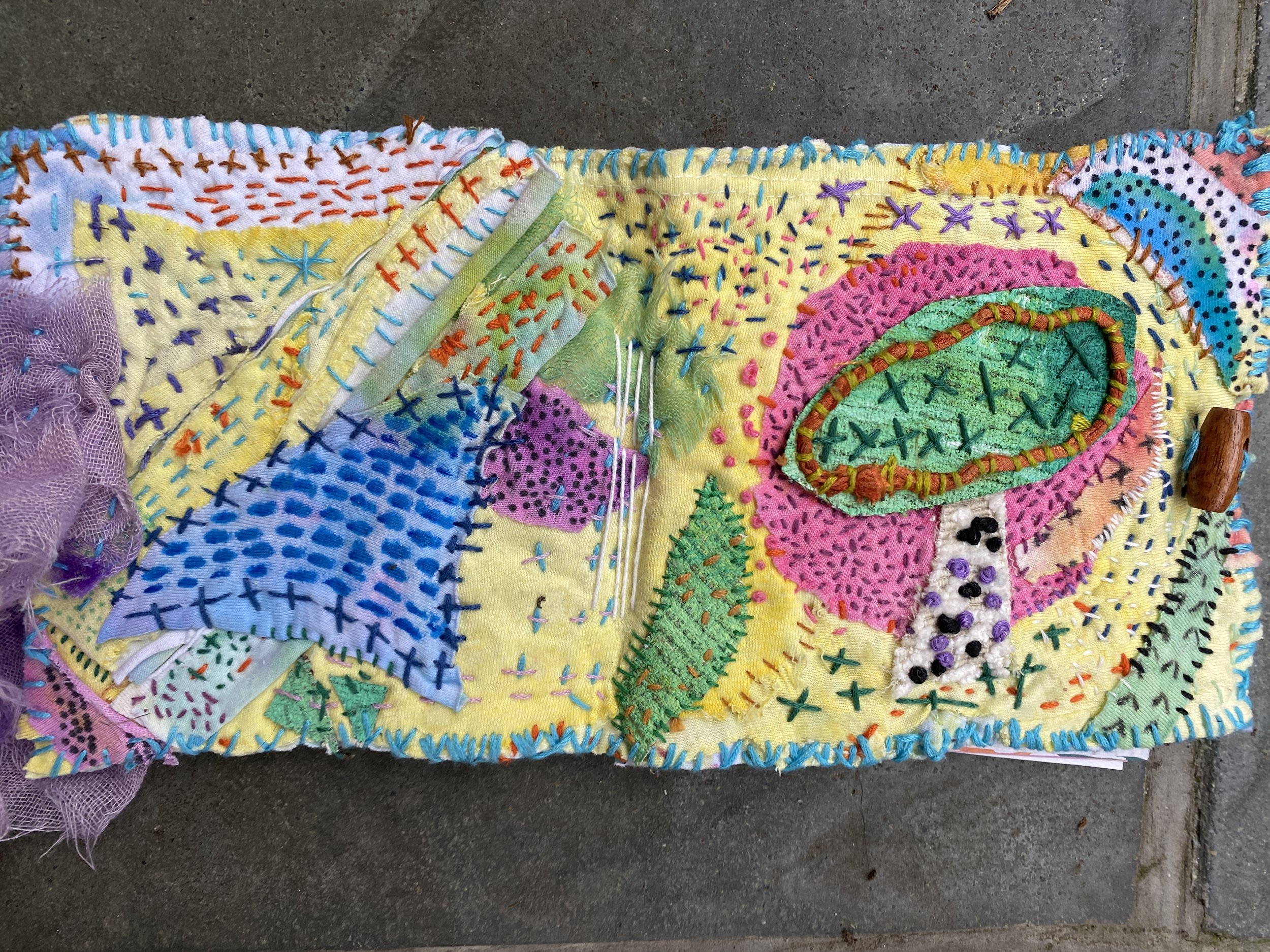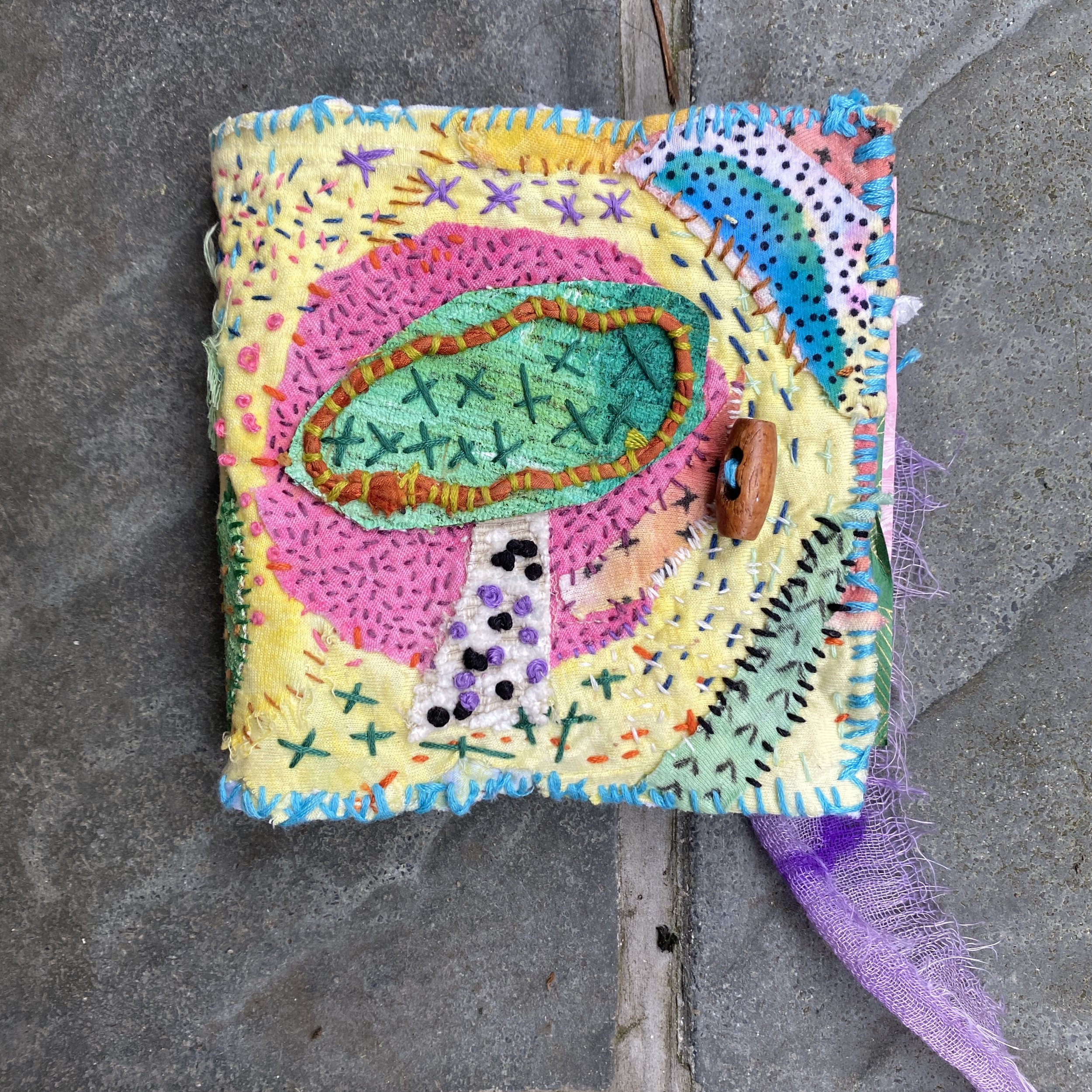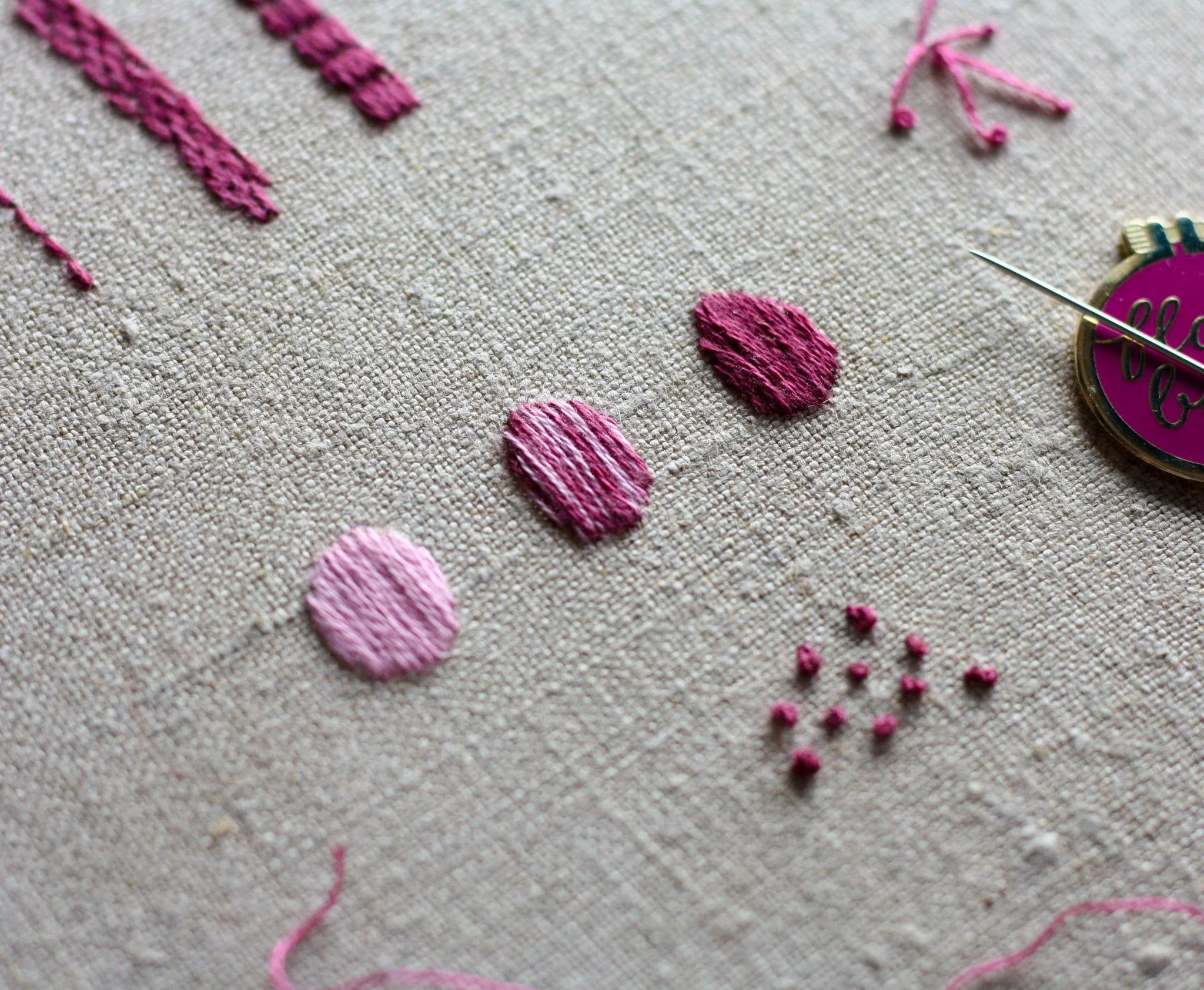How to learn hand embroidery online (from 4 teachers)
When I was in secondary school we had to make an embroidered pillow in Home Economics class. For some reason. I just flaked out and didn’t do it, and then in the last minute, on the night before it was due, my mother did the whole thing, sewing into the small hours of the morning. Needless to say, my Home Economics teacher knew it wasn’t my work, but had no way of proving it. I was pretty lazy, and as well as that, I saw sewing and needlework as ‘girls stuff’ and was therefore dead against it.
I think, until recently, I viewed ‘girls stuff’ as lesser, or ‘weaker’, and wrote off an awful lot of novels, for example, and crafts, and experiences, because I didn’t want myself to be weak or in any way ‘diminished’ by my gender.
I was really glad to learn how to transfer designs onto fabric, because buying printed embroidery patterns on Etsy, for example, as I did here, is pretty expensive. Definitely check out Heidi Sternberg’s class on Skillshare that I talk about down below, because her explanations are really clear about transferring techniques.
A finished fabric book cover that I made following Sara Kay Hartmann’s Mixed Media Textile Collage class
Mixed Media Textile Collage with Sara Kay Hartmann
This is where my handsewing journey began, and it was a perfect place to start because there aren’t many rules and it’s about exploration and fun! Taught by textile artist Sara Kay Hartmann, you learn techniques for painting fabric in mixed media, creating art quilt collages, and embellishing them with beautiful quilting and embroidery stitches that will add oodles of texture and pattern to your art pieces. Learn to make figural art patches, quilt blocks, art journal covers, and frameable art in this fun, intuitive, and freeing textile class!
I like her art story as well, it’s really relatable - “As a new mom changing diapers and reading countless picture books, Sara rediscovered her early love of illustration art, and it rekindled her abandoned childhood yearning to create art herself. She timidly began doodling and drawing, and promptly fell into mixed media happily painting, journaling, and making all sorts of things. Before long, she was blending art techniques with her roots in fiber and textile and hasn’t looked back.”
Main points of interest:
Create pictures and abstract designs in painted patchwork that you then use quilting and embroidering techniques to sew the collage layers together
Walk through the process of painting fabrics using watercolor and acrylics, exploring mark-making and mixed media techniques for applying paint, creating patterns, and preparing your fabrics for collage. (this part was a revelation!)
Explore the process of creating figural collage designing mushrooms and butterflies as you explore the textures and patterns that arose from the painting process.
Run wild with your slow-stitchery using simple hand quilting and embroidery techniques to stitch the collage together and layer on the color and texture with those sweet, slow stitches.
Creativebug: Rebecca Ringquist
This workshop, taught by visual artist and designer Rebecca Ringquist, starts with the very basics of embroidery – setting up a hoop and threading needles – and dives into a visual encyclopedia of the most common stitches.
She teaches straight stitches before moving onto decorative and knotted stitches, including the elusive French knot.
Along the way, Ringquist offers tips for smooth embroidery and plenty of fabulous examples from her stitched artwork as inspiration. Look how gorgeous the finished project is too! I think when I started sewing, this particular project really looked so difficult and overwhelming, but if you just do one small step at a time - one stitch at a time! - you’ll be at the end before you know where you are. Kind of like creative writing…
Incidentally, she also has a book out: Rebecca Ringquist's Embroidery Workshops, A Bend the Rules Primer, published by STC Craft/Melanie Falick Books.
A Daily Practice with Lauren from Lark Rising Embroidery
This class, also on CreativeBug, results in an Embroidered ABC Wall Hanging, designed by fibre artist Lauren of Lark Rising Embroidery, with her own children in mind.
I actually took this class a few years ago, skipping back and forth through it, when I had no idea I’d have a baby someday. Now I want to properly do it again and have the full finished project to show for it! I like that it was designed as a daily practice, and each day, you learn how to embroider a different picture from the alphabet.
This month-long, nature-inspired embroidery practice gradually builds your stitching skills, resulting in a treasured heirloom that will bring love and art to any home.
Foundational Stitches & Techniques: embroidery on Skillshare
In this embroidery class by Heidi Sternberg, I picked up all of the essential hand embroidery techniques in my hand embroidery toolkit. I can refer back to my toolkit now every time I pick up a needle and embroidery project.
Main points:
Learn how to transfer your embroidery design depending on the fabric you are using
Learn how to stitch and use common or useful embroidery stitches - such as backstitching in lines or circles, French knots, Pistil stitch, Laid stitch
Find out what a stitch plan is and how to make one: a stitch plan includes the order in which you stitch each element, plus what type of stitch to choose for each element and what colour embroidery thread to use.
Heidi Sternberg also has another class that is a bit more advanced but so much fun: Essential Hand Embroidery Stitches & Design Composition - Stitching Lavender.
Gimena Romero and traditional Mexican embroidery
Last but not least: Contemporary Embroidery With Traditional Mexican Needlework: a Domestika course by Gimena Romero
Gimena Romero starts off the course by telling you who she is, why these particular embroidery techniques are so important to her, and where she finds endless inspiration to keep the creations coming with her needle and thread.
Honestly, the course is worth taking for just this introduction alone because it’s so interesting, listening to the stories of artists. I knew a tiny bit about Mexican folk art, but I came to this course knowing completely nothing about Mexican needlework traditions, and it’s just piqued my interest even more now.
Embroidery techniques like Tenango, Chamula, Tzotzil and the old traditions of Huixtán…how utterly unfamiliar and glamorous and wonderful these words sound in my mouth.











